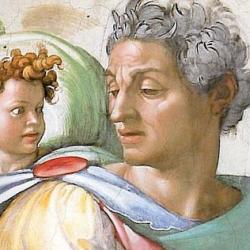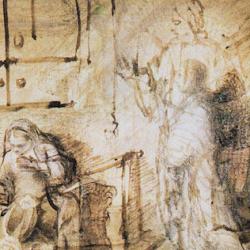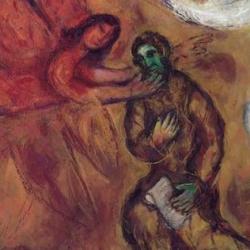Isaiah is the great prophet of tohu , formlessness. Of the 20 uses of the word in the Hebrew Bible, 11 are in Isaiah. Isaiah is the great prophet of the dissolution of form, and its re-establishment.
Cities are cities of tohu (24:10). Nations are tohu before Yahweh, and so too are their princes and judges (40:17, 23). Graven images are tohu (44:9). Yahweh created heaven and earth, and when he established it the earth was not tohu . Prayer to Yahweh is not tohu (45:19), and His strength is not formless (49:4). Idolaters trust in tohu (59:4).
The most intriguing use in Isaiah in 41:29b: “their molten images – wind and tohu .” On the one hand, that describes their insubstantiality. Images are nothing but wind and confusion. They have no power and no form. But “wind” translates ruach , often “Spirit,” and Isaiah 41:29 is the only OT passage other than Genesis 1:2 that has both “Spirit” and “formlessness.” When Yahweh’s Spirit hovers over the formlessness, an ordered cosmos emerges. But the combination of spirit and formlessness also produces idols. Yahweh’s creation is set in opposition to the idols. Perhaps the import is that the idolaters are claiming a kind of divine power, the power to form the formlessness by their own spirits.










